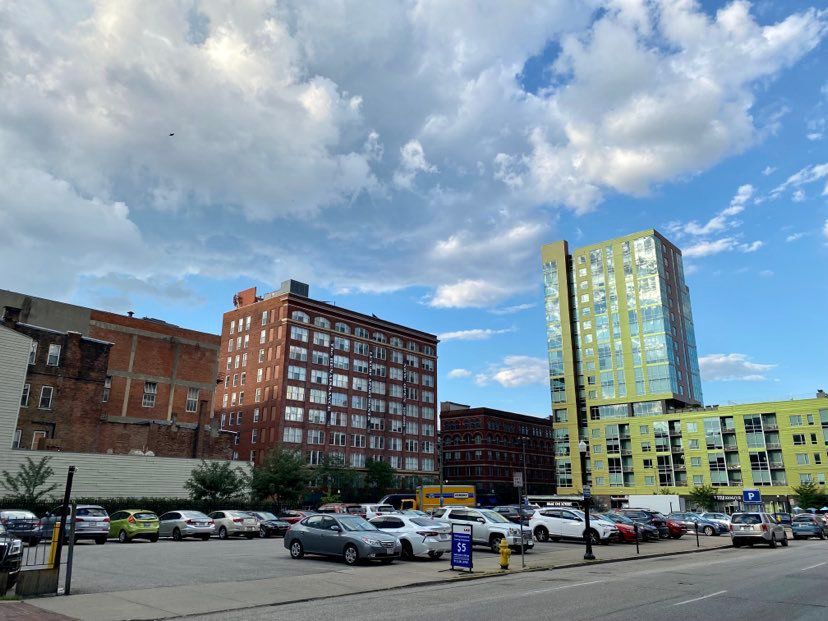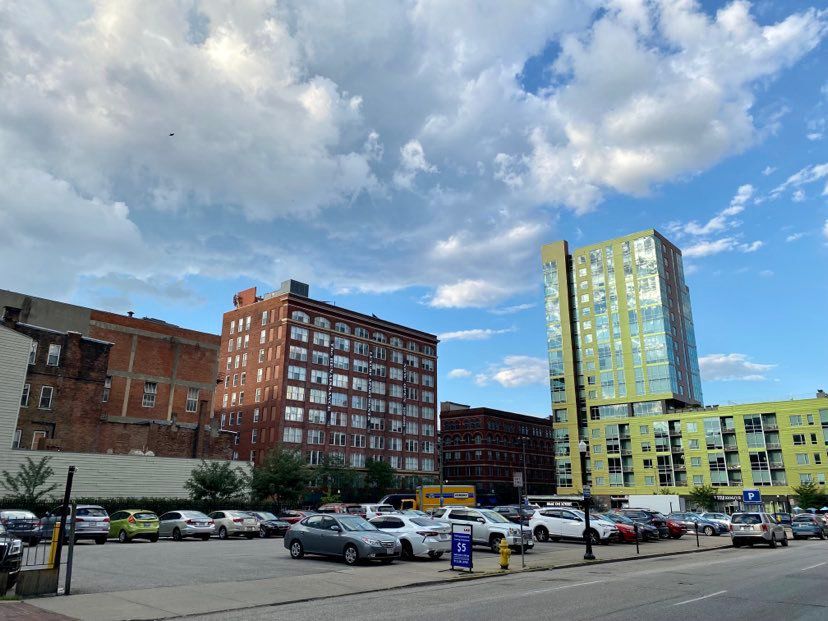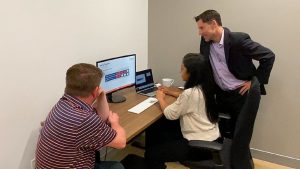CINCINNATI — Cincinnati City Council plans to evaluate city-owned properties in high-traffic areas to determine if vacant lots and surface parking may be more valuable to residents as affordable housing or maybe a community park.
What You Need To Know
- On Wednesday, City Council is considering a motion to evaluate redevelopment of city-owned surface parking and vacant lots near major roadways
- Council member Mark Jeffreys envisions the plan spurring “best use” development, such as housing or retail, in under-used spaces
- If it passes, Cincinnati’s administration would inventory and evaluate the properties to determine which to send out for RFP
- One council member views the plan as “Step 1” and would already like to consider other city-owned properties
On Tuesday, Cincinnati City Council’s Climate, Environment and Infrastructure Committee approved a motion requesting an audit of city lots along or near major transportation corridors. It also asks the city to rank each of them based on their potential for redevelopment into what Council Member Mark Jeffreys called “better uses.”
That could mean housing, retail, or “something completely different,” said Jeffreys, who authored the motion. He stressed any opportunity to create affordable housing units is one the city should always consider.
If the City Council approves the motion on Wednesday, the administration will spend the next 90 days identifying, inventorying and ranking the lots. City staff would then generate a report outlining which spots to the prioritize and how best to use them.
“We don’t just want a list of properties. We’re asking for recommendations on which one’s make the most sense to put out as an RFP (request for proposal) to redevelop them into something that has far greater community benefit,” said Jeffreys.
Council Member Jeff Cramerding described the idea as “very exciting.” He didn’t waste time making a few own suggestions. One of them is a parking lot next to City Hall used by city staffers.
“A surface lot certainly not the best use of that prime space,” he said. “It’s important to get our heads around what the city owns and then see how we can lift them to a higher use.”

The city plans to start with its lots near major roadways. However, some members of City Council have already voiced a desire to expand the program. (Spectrum News 1/Casey Weldon)
Kristen Baker, executive director of Local Initiatives Support Corporation (LISC) Greater Cincinnati, referred to the city’s study as an important first step in understanding the value of its untapped community assets. Developers won’t be able to do much with “little sliver of land” far outside Cincinnati’s urban core, Baker said. But a larger, under-developed plot in an area on the cusp of a groundswell of investment is another story.
Having that information can help the city leverage those lots into plans for broader neighborhood development, Baker said. She feels it will be particularly effective when paired with other strategies, such as the Affordable Housing Trust Fund and Hamilton County’s Reinventing Metro public transportation plan.
“It doesn’t mean we’re going to suddenly develop on all those properties. But just having that understanding of what needs are and where there’s potential for investment can mean a lot to a community, especially when coupled with some of our other development strategies,” she added.
While this approach may be new to Cincinnati, it’s been happening the past few years in other major metropolitan areas around the country.
The Wall Street Journal recently reported that there are probably between 700 million and 2 billion parking places in the United States. But that number has slowly started to shrink in recent years. Los Angeles County in California, for example, has sold the equivalent of 20,000 parking spaces for redevelopment since 2010.
Dallas and Detroit have converted parking lots into housing complexes and green space, according to an article in Fast Company. The report also references a portion of a San Diego lot that got turned into a salt marsh.
As of Tuesday, there are 39,127 parking spaces in parking lots and garages across downtown Cincinnati, according to data from Downtown Cincinnati, Inc. More than 6,700 of them are available to commuters, who don’t pay for a monthly pass. Most of the lots aren’t city owned.
The numbers don’t include metered spaces or lots in neighborhood business districts around the city.
“There’s more than enough parking in Cincinnati,” said Matt Butler, president of Devou Good Foundation. The foundation partners with government agencies and community organizations to assess the unique needs of cities across the region. There’s a particular focus on transportation and making streets safer for pedestrians and bicyclists.

Proponents view the plan as getting the most out of city assets. Others, see the approach as promoting more walkable neighborhoods. (Spectrum News 1/Casey Weldon)
The foundation played a key role in creating streateries in downtown. Butler views the parklets as a way to get people to reimagine how they look at spaces perceived as meant for cars.
Butler believes a reevaluation of some of those surface lots could lead to parts of downtown becoming more like Vine and Main streets in Over-the-Rhine. Those have “great walkable, community feel to them,” he said.
Eliminating some surface lots could also lead to greater use of parking meters and on-street spots, Butler said. Right now, 60% of downtown metered spaces are vacant during the day, he added, referencing city data.
“Simply increasing or maintaining parking spaces does not truly benefit anyone in the long term, particularly when the city aims to encourage the use of sustainable transportation options such as buses, bikes, walking or scooters,” he said. He went on to add City Council will approve a new Green Cincinnati Plan, which includes a series of climate goals for Cincinnati.
Making downtown more inviting for residents couldn’t be important in the years to come, Jeffreys said. Cincinnati relies heavily on taxes for operational costs. Earnings taxes account for about 70% of the city’s revenue, Jeffreys said.
“We’re in a world today where people can, for many professions, work remotely. And as a result, we don’t get the earnings tax we need,” he added. “So, part of the aim here is to convert to more productive lands use that could make the city more attractive to residents.”
Removing a lot also doesn’t mean the city is getting rid of parking options, at least not long term, Jeffreys said.
The first-term Council member gave the example of The Kroger on the Rhine at Walnut Street and Central Parkway. The former parking lot now houses retail space, a grocery store and residential apartments. It also has a 35-space parking garage.
“I don’t think always it has to be a choice of one or the other,” Jeffreys said. “This is about maximizing potential where possible.”
Even though the report is still more than 90 days away, Cramerding’s dubbed it “Step 1.” He noted during Tuesday’s committee meeting that he’d like to see the research broadened to include other city properties. He offered Mill Creek and the Ohio River as areas he’d like to analyze next.
His hope is to create a full “master plan.”
Jeffreys doesn’t want to jump that far ahead, though. He admitted to not knowing how many pieces of city land will end up in the final report or exactly where they’ll be. To him, that’s the whole point of the motion.
“Let’s get a read on how many there are and then, from there, we can recommend where to start,” Jeffreys said.




